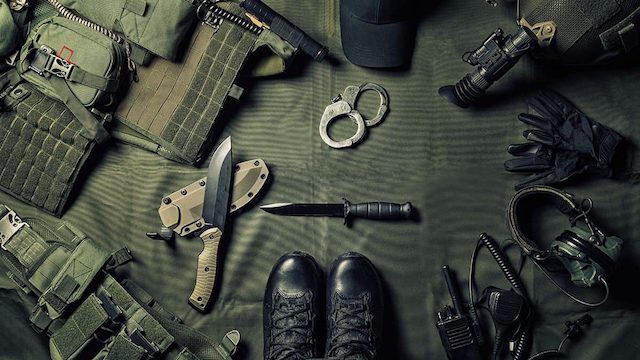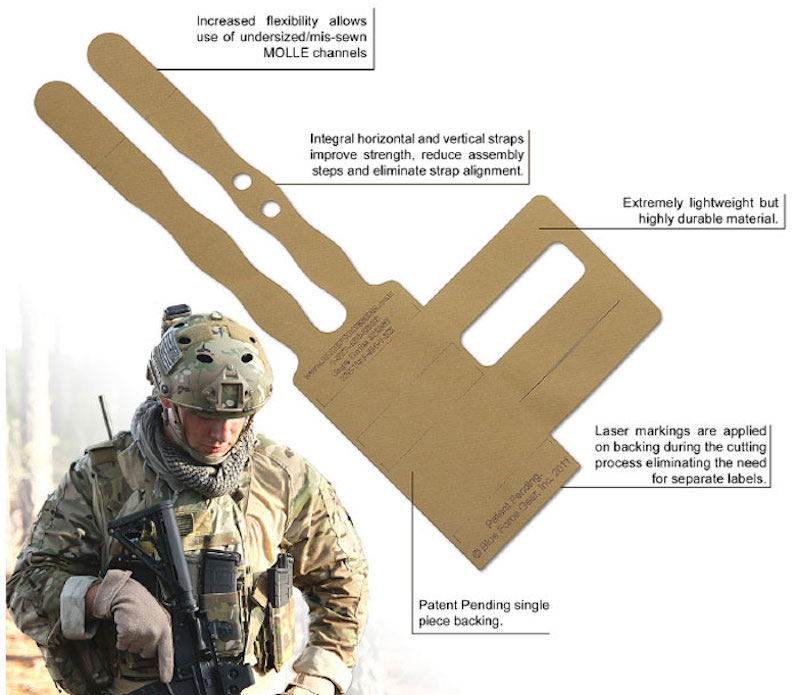Get the weekly SPARTANAT newsletter.
Your bonus: the free E-Book from SPARTANAT.

Equipment: Quo Vadis, Tactical Gear?
The evolution of tactical gear in 2012 marked a shift towards high-performance fabrics, emphasizing lighter and more effective equipment. This trend, rooted in the outdoor industry, is now infiltrating tactical gear to enhance operational performance, following the model of the "Tactical Athlete". This progression towards lighter materials and innovative designs, as seen in examples like Blue Force Gear's Helium Whisper and First Spear's 6/12 System, is geared towards maximizing functionality while minimizing weight. The future of tactical gear lies in complex, high-performance systems tailored to specific needs, drawing inspiration from advancements in industries like automotive and aerospace.
The development of tactical gear has always been based on the needs of users and insights from operations and its conditions. A real leap or the next step could be observed in 2012, according to SPARTANAT author Markus Jahn. The year 2012 was characterized by the use of high-performance fabrics, which served to rethink existing concepts and make them more effective, but above all, lighter.
This trend is not entirely new and has been well known in the outdoor industry for years. Especially in the USA, ultralight hiking is a field where every gram counts, and the kitchen scale is an important metric in gear procurement.
Although the requirements for gear in tactical operations are stricter than in civilian areas, materials and systems that withstand the weather conditions and demands of the high mountains or deserts of the world can also be used for tactical purposes. Materials, designs, and manufacturing techniques that have been used in various outdoor products for years are increasingly making their way into the realm of tactical gear.
The image of the "Tactical Athlete", the tactical high-performance athlete, illustrates the aim of providing the user with equipment that supports and enhances their performance, similar to an athlete from the Olympic field.
One way to achieve this is through reducing the weight of personal gear, mainly through the use of new materials. The shift away from using 1000D Cordura in the USA has long been standard practice, as the differences in durability compared to the lighter 500D Cordura are marginal. Ultimately, it must be considered whether a product should last throughout its lifecycle or offer a significant advantage in terms of weight during the deployment/service period.
The image of the "Tactical Athlete", comparing the operator to the athlete, aims to provide high-end equipment to help them fulfill their missions.
This could amount to several kilograms without sacrificing performance. Systems made from 500D will certainly wear out faster than those made from 1000D (as seen in the image: a bag made of this material), but it must be considered whether this can be accepted, as the difference is negligible, and a system that wears out immediately in 500D would also wear out immediately in 1000D.
While the long durability of a product may be a primary criterion for private users, for military users, this should not be the main focus. A good analogy here might be the high-performance cars of Formula 1, which also wear out multiple sets of tires in a race.
Is this economical? No. Effective in achieving the goal? Yes. Nothing else should matter for the professional user (bearing in mind that lighter systems do not wear out within a single deployment or weekend 😉).
Currently, the trend is to evaluate materials that have long been on the market for their use in tactical gear. The goal is to make equipment lighter and more effective. This involves improving existing systems, whether through new techniques or materials, to gain the greatest advantage possible.

Existing systems are being reconsidered and evolved. One example of this is the path taken by Blue Force Gear (BFG) (as pictured above: RACK Minus) with their MOLLE Minus and Helium Whisper systems. The well-known and widely used MOLLE system has been rethought, improved, and replaced with Helium Whisper. When combined with the MOLLE Minus system, also developed by BFG, as a modular platform, a high-performance system is achieved without compromising durability and with significantly reduced weight.
Following this trend, we will see in the near future a widespread use and integration of new materials into existing products to improve functionality and save weight. Moving away from the traditional PALS system to built-in attachment points in carriers (e.g., MOLLE Minus from BFG or 6/12 System from First Spear - left in the image) will increasingly gain popularity in terms of weight savings and make the use of new materials inevitable.
Minimalist systems designed around the specific product to be carried will continue to enter the market. Plate carriers in various sizes tailored to the specific plate shape are just one of many examples. (S&S Precision currently offers one of the most minimalist and product-focused systems with the Plate Frame - pictured below.) In the field of modular pouches, the trend is either as diverse as possible or as specific as possible.
Looking towards the future, systems will certainly become more complex, meaning more high-performance. At the same time, we will also see a shift from fully modular variations to classic, very specific carriers and setups specializing in various application areas (the factor of weight saving associated with this should not be underestimated).
Regarding the future, the automotive or aerospace industries also provide insights into possible developments. Today, some elements are more likely to be glued rather than welded, as this creates a much more homogeneous connection that better absorbs and distributes forces. Similar developments can be observed in the field of technical textiles, where some elements are already glued or ultrasonically welded instead of sewn.
On the one hand, this allows the tissue in question to remain waterproof (without much effort), as perforation through stitching can be ruled out; on the other hand, this eliminates annoying seams, the resulting perforation of the respective material, and thus its partial weakening (especially with thinner fabrics, this is a factor not to be underestimated).
Markus JAHN (Stratagem)

Crye Precision presents the AirLite line at the Shot Show.
SPARTANAT is the online magazine for Military News, Tactical Life, Gear & Reviews.
Send us your news: [email protected]
Ad
similar
Get the weekly SPARTANAT newsletter.
Your bonus: the free E-Book from SPARTANAT.


